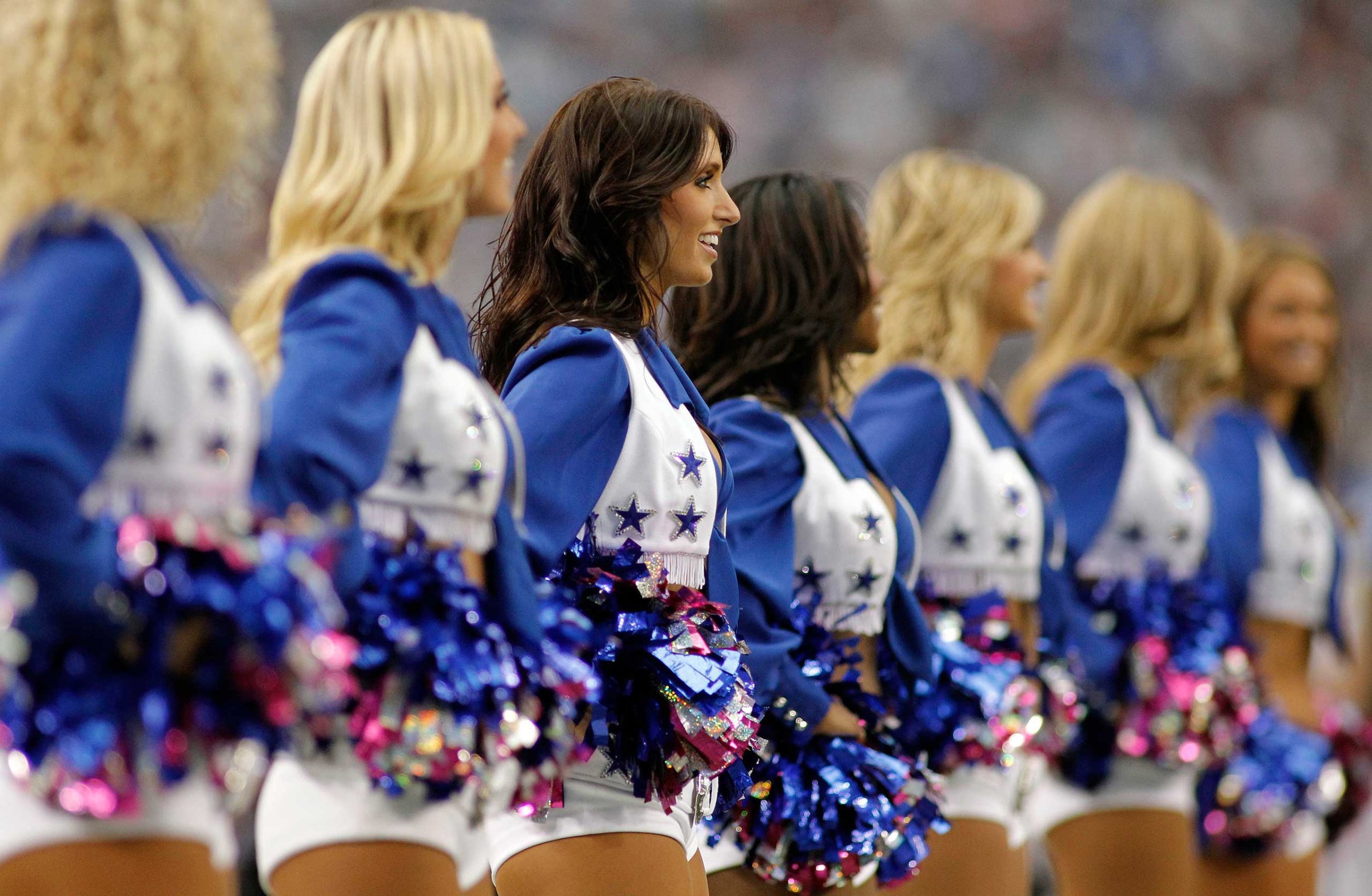
How would you like it if there were beautiful women whose only job was to keep you entertained? Women who kept their bodies toned to your exact specifications; spent thousands of dollars on their hair, makeup and clothing so they always looked their best for you; and had invested in years of training to do complicated acrobatics designed to bring you joy. Now add to this fantasy that these women brought you hundreds of thousands of dollars in profits and you give them almost nothing in return. Sound like a fairy tale? It should be.
For decades, National Football League teams have skirted the issue of paying cheerleaders fair wages by acting as if cheerleaders were not their employees. This despite the fact that cheerleaders work 42 weeks a year, practice several times a week, attend corporate and charitable team events, are photographed for promotional media and paraphernalia, and, of course, entertain fans during games.
In court case after court case, teams have argued that because cheerleaders are independently contracted through third parties, the multi-billion dollar organizations whose business interests they promote are not obliged to pay them anything close to compensation required by state labor laws. And in court case after court case, judges have disagreed and ordered teams to pay their cheerleading squads millions of dollars in back wages.
The Tampa Bay Buccaneers recently agreed to pay up to $825,000 to settle a lawsuit brought by cheerleaders who were paid just $100 a game. Prior to a lawsuit settled last September, the Oakland Raiders were paying their cheerleaders an hourly wage of just $5. Now, after the $1.25 million settlement, the Raiderettes can look forward to the same income as the team’s other minimum-wage employees.
In California, legislation proposed by Assemblywoman Lorena Gonzalez in January would require professional sports teams to recognize cheerleaders as their employees and pay them at least the state-mandated minimum wage. Gonzales, herself a former collegiate-level cheer athlete, has said that it hardly seems fair to pay cheerleaders, with all their specialized training and the risk of physical injury, less than the staff selling beers in the stands.
So are cheerleaders only worth the minimum wage? Standard economic theory indicates that in free markets, workers are paid their value to their employers. Anything less is worker exploitation.
Eric Smallwood, senior vice president at Front Row Marketing, has estimated that the TV appearances of cheerleaders on game days alone are worth about $8.25 million to the NFL, or $317,000 per year for each team in the league. Cheerleaders also provide value by promoting ticket sales and promoting the NFL brand.
So why are they paid so little?
According to National Federation of State High School Associations there are almost 400,000 individuals participating in high-school level cheerleading in the United States. Opportunities for professional cheerleaders are limited, however, given that there are only 26 NFL teams that currently have cheerleading squads (the Buffalo Bills disbanded its squad after a lawsuit last year). This suggests that the supply of cheerleaders exceeds demand. Such a labor market hands bargaining power to the employers, allowing them to negotiate down wages.
You might be wondering why this isn’t a problem for other athletes, many of whom are well paid for their contribution to their teams despite the fact that they face fierce competition from other would-be players. Historically, this had been a problem, and the only reason we no longer hear about it is that those players fought for the fair wages they are paid today.
In the first half of the 20th century, many professional sports leagues used their bargaining power to limit the pay of athletes. In the latter half of the century, though, many restrictions on player wages were eliminated leading to significant increases in player pay. For this reason, the share of its revenue that Major League Baseball paid to its players increased from 17% in 1956 to 53% in 2012. Over the same period, the National Football League increased the share of its revenue paid to players from 32% to 52%. Even the English Football League has had to increase the share of its revenue it pays to players, up from 38% in 1958 to 76% in 2013.
Studies indicate that similar stories can be told today about student athletes at American colleges and universities.
Perhaps you think that cheerleaders aren’t really being exploited for the same reason that people in the past didn’t think players were being exploited: because these athletes really love to play their game. Or perhaps you think that cheerleaders should be willing to work for very little because there are other benefits to the job, such as access to other employment opportunities or even better marriage markets. So what difference does it make if sports teams exploit their workers?
Worker exploitation has nothing to do with how much someone likes their job, or how much that job improves a worker’s other prospects, or whether or not the job can help her fulfill other life goals. If the NFL genuinely wants to address the perception that it has no respect for women (who make up 45% of its fan base), one place to start would be to guarantee that the women who do the most to promote the brand are properly compensated.
More Must-Reads From TIME
- The 100 Most Influential People of 2024
- The Revolution of Yulia Navalnaya
- 6 Compliments That Land Every Time
- What's the Deal With the Bitcoin Halving?
- If You're Dating Right Now , You're Brave: Column
- The AI That Could Heal a Divided Internet
- Fallout Is a Brilliant Model for the Future of Video Game Adaptations
- Want Weekly Recs on What to Watch, Read, and More? Sign Up for Worth Your Time
Contact us at letters@time.com